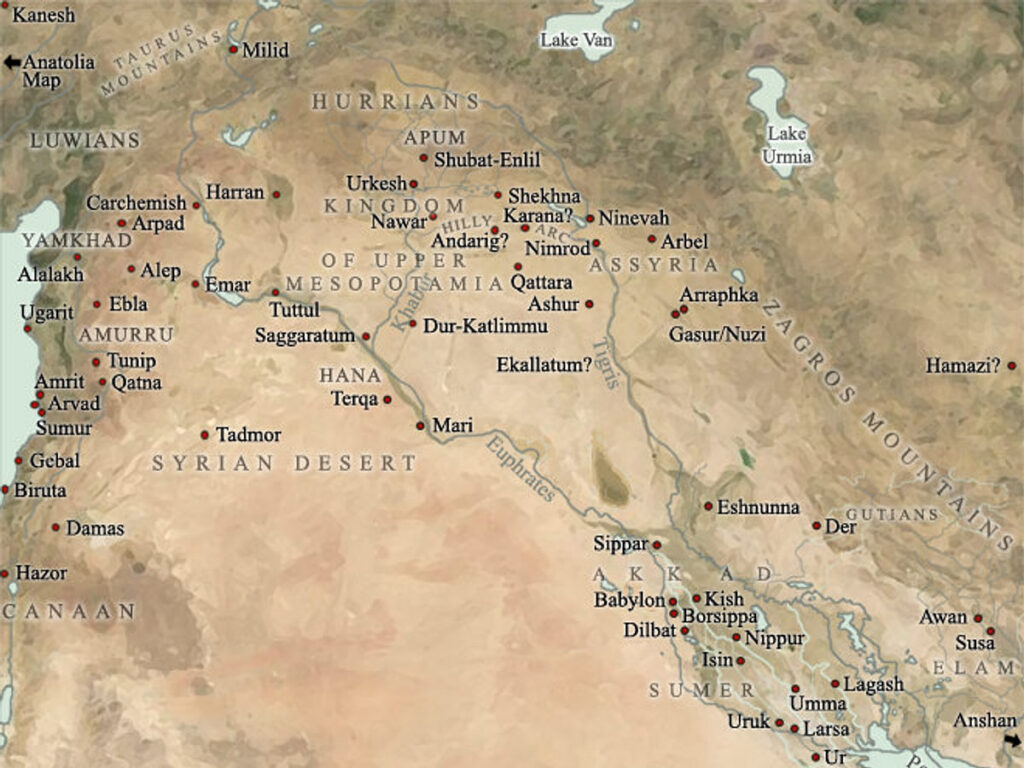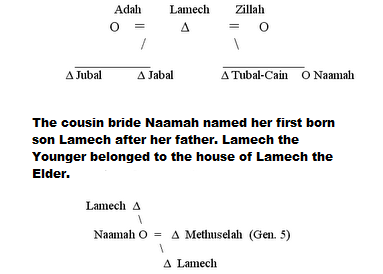Historical record and myth comparative review of the existence and origins of the progenitor.

Book of Jubilees 11:22
The Book of Jubilees, trans. R. H. Charles. London [1917]
וביובל התשעה ושלושים בשבוע השני בשנה הראשונה לקח לו תרח אשה ושמה עדנה בת ארם בת אחות אביו לו לאשה:
And in this thirty-ninth jubilee, in the second week in the first year, Terah took to himself a wife, and her name was ’Êdnâ, the daughter of ’Abrâm the daughter of his father’s sister.
Hypothesis: Terah Preist/King of AGADE,
Born: Ur, Chaldea abt. 2122 BC
Ruled the territory from Harran to Ur, Mesopotamia.

Monday, July 11, 2011
The Marriage and Ascendancy Pattern of Abraham’s People
Alice C. Linsley
”Analysis of the structure of the Genesis “begats” reveals that lineage was traced through both the father and the mother (double descent). The double descent pattern is evident in the cousin bride’s naming prerogative.
The Horite Hebrew had two wives. One was a half-sister (as was Sarah to Abraham) and the other was a patrilineal cousin (as was Keturah to Abraham). The first wife was the sister bride and the wife of the man’s youth. The second wife was taken close to the time of the man’s enthronement.
Because there were two wives, there were also two first-born sons, but only one was the proper heir. The proper heir was the first-born son of the first wife. The first-born son of the cousin bride belonged to the household of his maternal grandfather. In his study of primitive kinship patterns Claude Levi-Strauss recognized in 1949 that mother and child do not always belong to the same household or clan.
Isaac ruled over Abraham’s territory in Edom because he was Sarah’s first and only son. The firstborn son of the cousin wife served the throne of his maternal grandfather, after whom he was named. The pattern is evident in this diagram.
Lamech the Elder had two wives. HIs daughter Naamah (Gen. 4) married her patrilineal cousin Methuselah and named their first-born son Lamech, after her father (Gen.5:26.)

The line of the cousin wife is traced through the cousin bride’s naming prerogative. This custom explains why similar names appear in Genesis 4 and 5 two generations apart. For example: Irad’s daughter married her patrilineal cousin and named their first born son Jared after her father. Irad and Jared are linguistically equivalent names. Irad/Yrd is mentioned in Genesis 4:18 and Jared/Yrd is mentioned in Genesis 5:15.
The pattern continues to the time of Jesus Messiah. Lamech had two wives: Adah and Zillah. Abraham had two wives: Sarah and Keturah. Jacob had two wives: Rachel and Leah. Moses’s father had two wives: Jochebed and Izhara. Moses had two wives: the “Kushite” bride and the Midianite bride, Zipporah. Samuel’s father Elkanah had two wives: Penninah and Hannah. This was the pattern for the Horite Hebrew rulers who practiced endogamy.

Amram’s cousin wife was Ishara/Izhar. She named their firstborn son Korah after her father. Korah the Younger ascended to the throne of his maternal grandfather. This means that Jochebed was Amram’s half-sister wife. All of the people in this diagram are descendants of or kin to Seir the Horite Hebrew ruler (Gen. 36).“